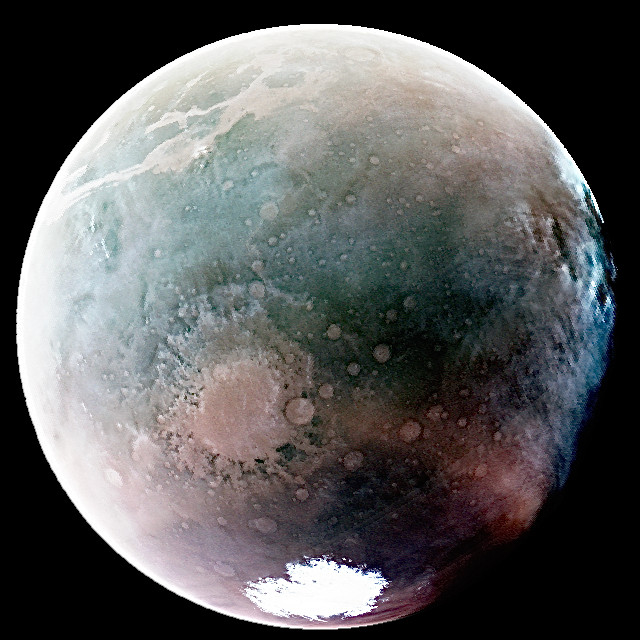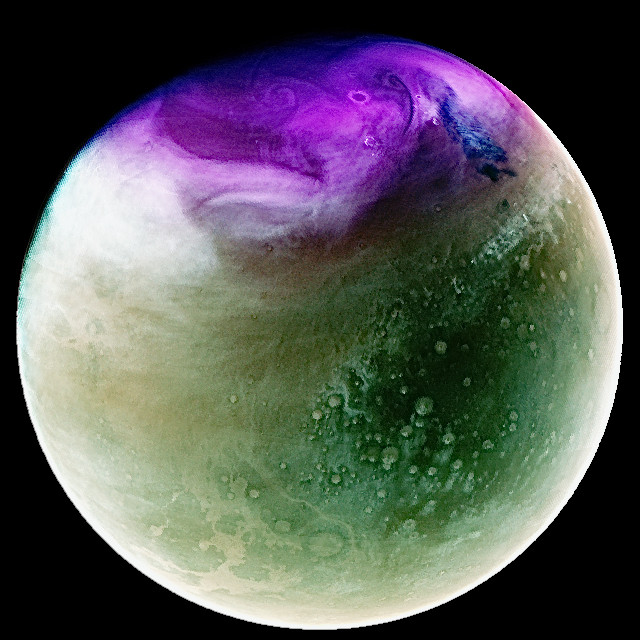NASA’s Mars rover MAVEN has captured Earth’s neighboring planet in fascinating detail, revealing the changing seasons in Mars’ orbit around the Sun.
MAVEN is tasked with viewing the planet in ultraviolet light (which has shorter wavelengths than visible light). Using the Imaging Ultraviolet Spectrograph (IUVS) instrument, the spacecraft took spherical images of Mars in 2022 and 2023 when the planet was near opposite ends of its elliptical orbit. NASA has also released two new images showing the southern and northern hemispheres of Mars in new and gorgeous hues.

The first image was taken in July 2022 during the summer of Mars’ southern hemisphere. Mars takes roughly twice as long to orbit the Sun as Earth does, so the seasons on the red planet are about twice as long as on Earth.
In this image of Mars, one of the planet’s deepest craters (known as the Argyre Basin) appears covered with atmospheric haze that appears a pale pink hue at the lower left. The deep canyons of Valles Marineris are in the upper left of the image, while the south polar ice cap shrinking due to summer heat is visible in white at the bottom of the image.
MAVEN’s ultraviolet camera measures wavelengths between 110 and 340 nanometers outside the visible spectrum. To help us see the images, NASA creates them with brightness levels of three ultraviolet wavelength ranges, represented as red, green, and blue. Within this color scheme, atmospheric ozone may appear purple, clouds and hazes may appear white or blue, and the surface may appear tan or green.

The second image of Mars was taken in January 2023, when the planet was at its furthest point in its orbit from the Sun. MAVEN offers a fascinating view of the northern hemisphere of Mars. The planet’s harsh winter season has caused ozone accumulation in the upper part of the planet. That’s why it appears as a vibrant magenta in the image. Ozone is destroyed by reaction with water vapor in the planet’s atmosphere in the northern spring and is confined to lower altitudes during the winter.
NASA’s MAVEN spacecraft was launched in 2013 to study the planet’s upper atmosphere, ionosphere, and interactions with the Sun to understand how Mars lost its atmosphere millions of years ago. Seeing Mars in ultraviolet light gives the planet a new look, even as it loses its distinctive red hue at these wavelengths.
When it comes to planets in the solar system, we can always say that Jupiter is the most photogenic planet, but Mars is definitely making a difference with these new images.